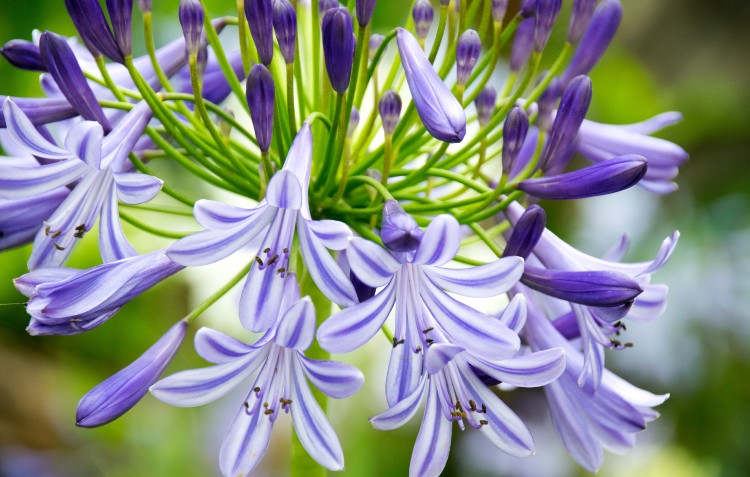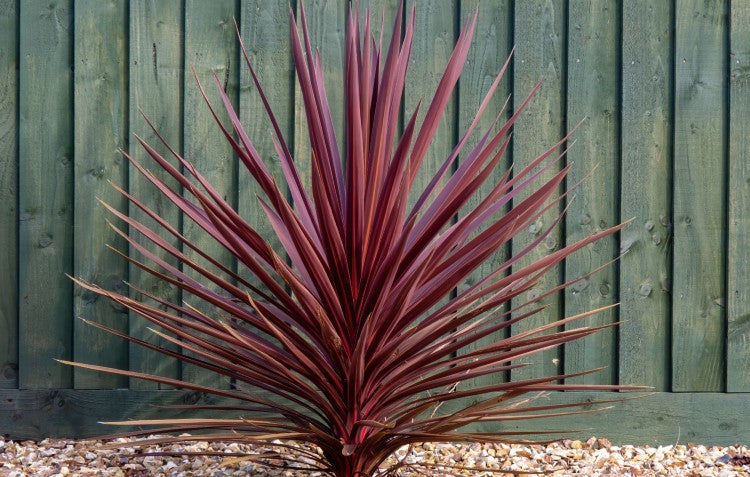If you’re on a water restriction, are trying to save water or live in a part of the country that doesn’t see much rain, then planting hardy shrubs and drought-tolerant plants could be the solution to a happier garden – and gardener! To help your outdoor space flourish we’ve selected 10 of the best low maintenance plants ideal for sowing in autumn.
Before you start…
To get the most out of your new plants it’s important to lay a foundation in your garden first. Preparing the soil, choosing the best plants for the climate where you live and remembering that, whilst these plants might need little water, they still need nurturing in the early stages when they first start to establish in your garden, will ensure a successful set up. Planting at this time of year, at the very start of autumn, will give your new plants the best chance of flourishing before summer rolls around again. Watering the plants semi-regularly in the first three months will encourage a deep root system to establish in time for the next heatwave.


Agapanthus
This striking hardy species, also known as African lily, originates from Southern Africa and is easy to grow even in poor soil conditions. It is especially tolerant of drought thanks to its large water-storing roots. Though they need watering and feeding when first planted, once established these tough plants can withstand long dry spells with ease if positioned in a warm, sunny spot with well-drained soil. Ideal for borders thanks to their statuesque stems and upright shape, agapanthus boasts beautiful clusters of tubular flowers in dreamy shades of pale blue, cream and lilac.

Tip: There are pockets of Australia where agapanthus is considered to be a weed and it can spread beyond control, however it is a plant of myths and a common misconception is that it’s a harmful weed. In many parts of the country it is considered the gardener’s friends as it is one of the hardiest and best drought-tolerant plants to grow. We recommend checking with your local authorities regarding the weed potential of agapanthus in your area before planting.
Thyme
Who knew this fragrant herb is also well suited to growing in dry gardens! Often used in the kitchen, thyme produces a mass of tiny edible flowers that look good in the garden, especially to those all-important pollinators, as well as tasting great. Grow swathes of the Mediterranean herb across garden beds or in between pavers for a lush look throughout the year. Beautiful as well as practical, thyme thrives in well-drained soil, positioned in full sun or partial shade. It can also be grown in pots, ideal for balcony gardens.



Acacia
Iconic as Australia’s floral emblem, acacias, also known as wattles, are one of the most drought-tolerant plants you can have in your garden thanks to their tough structure highly resistant to moisture loss. The Golden Wattle is a fast-growing tree ideally suited to establishing in a new garden, with tiny puffballs of sweet-smelling yellow flowers blooming in dense clusters come spring. This native plant, usually found growing in the Australian bush, is well suited to harsh climates though does have a notoriously short life. There are many species of wattle to choose from, but generally all require well-drained soil, plenty of sunlight and ample room to grow in.

Gazania
This South African perennial daisy is striking to look at, well suited to growing in Australia and can cope exceptionally well in drought and coastal conditions, making it a great all-rounder for your garden. Exhibiting showy flowers in cheerful shades of yellow, orange, red, pink and white, gazanias are low maintenance and very easy to grow, thriving in full sunlight in sandy, well-drained soil, though they can tolerate poor soil too. This hardy plant makes an eye-catching addition to a garden rockery.
Tip: Gazania is regarded as a weed in some parts of Australia, including Victoria, Tasmania and South Australia. Though it can be an invasive species in some habitats, particular on the coast, many of the new hybrids are safe to grow in most areas. It is recommended to research which varieties are best suited to the area in which you live before planting.

Correa
A tough native shrub found mainly in Eastern Australia, this is a valuable plant to have in the garden, particularly when in bloom as their delicate bell-like flowers are rich in nectar, attracting honey-eating birds. Easy to grow and maintain, correas are best planted in full sun or light shade, well suited to shrub gardens and rockeries though they can also survive growing under large trees.

Lavender
Fill your garden with fragrance and flowers with a dazzling display of purple lavender. There are three main types of lavender to choose from: English, Italian and French, and all are drought-tolerant once established. Position in a sheltered spot with full sunlight and well-drained soil, or in raised pots, for best results. This perfumed shrub does not tolerate frost, so ensure it suits the climate where you are before planting.

Echium
This bold plant promises to make a statement in your outdoor space. Tolerant of coastal conditions, heat, sunlight and low water levels, echiums will reward you with gorgeous spires of purple flowers that act as a magnet for bees, butterflies and birds. Growing well in full sun and well-drained soil, echiums are ideal for large gardens where they have plenty of room to grow, as they can reach over two metres in height.

Agave
If you’re looking to create more of an architectural display in your garden beds then look no further than the agave plant. These perennial succulents often have dramatic fleshy leaves with serrated edges and spiny pointed tips. Agaves are easy to grow in a sunny position with well-drained, sandy soil, ideal for borders or rockeries. Hardiness can vary between species, though most can survive without water for long periods of time. Once established these plants can almost be forgotten about as they store water in their thick foliage, using their long roots to absorb more when necessary.

Cordyline
A truly water-wise plant, cordylines give year-round lush foliage and colour when positioned in a shady spot. Easy to care for in both sunny and temperate climates, this palm-like plant promises to bestow a tropical ambience to your garden beds and borders, with minimal watering once established. Their tufts of spiky red, bronze, pink or green leaves will keep the garden looking lush throughout the year.



Grevillea
This striking native species ranges from a small shrub to a large tree, identifiable by its distinctive spider-like flowers. These evergreen plants are beautiful yet self-sufficient once established. Preferring a sunny position in the garden, with gritty, well-drained soil, they can benefit from occasional deep watering (Hoselink’s Root Waterer & Soil Breaker is ideal for this). Fuss-free yet exquisite, grevilleas offer an explosion of colour all year round thanks to their nectar-rich flowers irresistible to insects, birds – and us!










